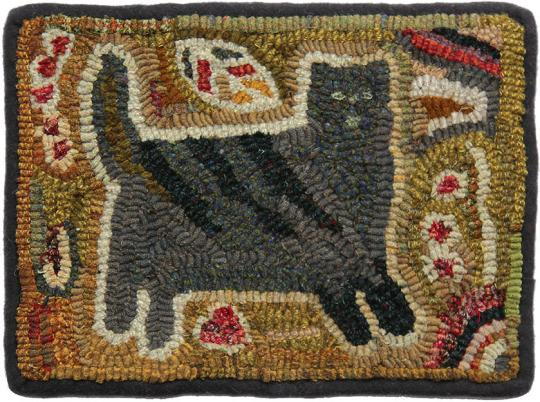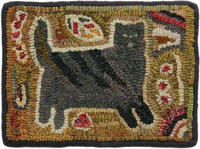Scrapbag Treasures
From castoffs to a primitive rug

Our mothers and the generations before us knew the value of having a household scrap bag. My grandmother, who was born in 1888, was an avid quilter and had a scrap bag of her own. I loved to sit by her while she quilted with leftovers and sewed doll clothes from her remnants. Fabric was never thrown away.
The term “scrap bag” is not in common use by younger generations, but it is familiar to rug hookers of all generations—we all have leftover strips of wool! A scrap bag is a valuable asset if you love the primitive look in rugs.
Primitive rug lovers enjoy the muted colors associated with old worn rugs, love the varied backgrounds, wide strips of wool, and the use of everyday motifs from home life and gardens of past generations. Fabric was precious and clothes were passed down to the next generation. Colors may have been limited. The design of many old primitive rugs remind me of my grandmother’s quilting. She created quilts by hand quilting on plain, solid fabric. She would fill the fabric with drawings of everyday things—some upside down and facing different directions. If there was a space in the quilt she would think of something to fill the space. She liked to draw toys and baby items on her crib-sized quilts for the grandchildren. Motifs and objects in the old rugs are usually reflect daily life of long ago. Sometimes they are reminders of special events in our history or of things loved by families. The old rugs were hooked with cottons, velvets, and silk. People used what they had, especially if it was the right color.
Read NextHand-Torn Heart



